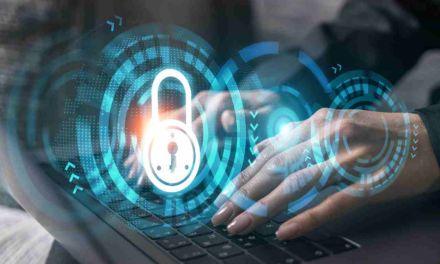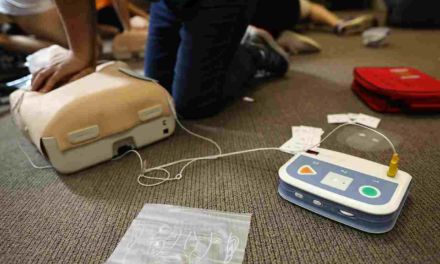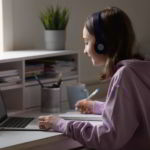Remote teaching has emerged to be an incredible resource for students across the UK, especially those who cannot access mainstream education. However, these students must be safeguarded to the highest degree.
With recent surges in the number of teachers being banned, it is now vital that the benefits of EdTech are integrated with sophisticated safeguarding measures to ensure a student’s safety.
According to a recent iNews article, there has now been a “five-year high” in the number of teachers being banned concerning sexual misconduct allegations. The article states:
“In total, 108 teachers across England were handed lifetime bans from the profession last year – the highest number in five years.”
More scrutiny is needed for remote teaching and lessons have to be learned. Schools need to ensure that whatever provision is delivered online abides by government guidance.
Thousands of students cannot access mainstream education for whatever reason, or some need an alternative provision. How can an online alternative provision be beneficial? It is important to choose a provision that upholds stringent safeguarding measures and ensures the safety of students learning remotely.
How to safeguard students online
Knowing when and where students are learning remotely is key. It should be a huge priority to integrate IP tracking and Geo-mapping of a student’s location to pinpoint exactly where a student is learning from. This needs to be authorised by the school via a safe place and well-being visit.
Additionally, having an effective alert system can allow students to raise a supervisor’s attention if there is ever an issue. A teacher can then deal with this as a matter of urgency and any irregularities can be resolved.
Schools and teachers still have the responsibility of ensuring students’ safety so the most suitable provision should be assigned. Notifications via emails or texts to DSLs and SLTs are critical. A school needs to be immediately informed of any issue with their student when they are learning remotely so the issue can be resolved instantly.
A seamless and monitored communication system between teacher and student should also be enabled. This allows a teacher to see if a student is engaging with the work in combination with idle time tracking. Also, anything happening in a student’s learning working environment, that could interfere with their physical or mental well-being or impact their educational development can be addressed.
Students should also have the ability to be isolated away from their peers with one-to-one support from qualified teachers whenever they require assistance. This can allow students to refocus and their passion for their learning can be reignited. Government guidance also suggests:
“If children and students are required to remain at home and learn remotely, helping parents, carers and children to make a weekly plan or structure is important. These plans should include time for education, playing and relaxing to reduce stress and anxiety.”
Students who are remote learning must have a structure they can stick to. This is so they do not deviate from their education, but also have the flexibility to learn at their own pace in a supervised and safe learning environment.
Teachers must adhere to regulations
Teachers, when delivering remote education, need to keep in line with what is expected from the Department for Education and government policies. A pastoral wraparound care approach should be administered by these teachers when possible.
“Keeping children and teachers safe during remote education is essential. Teachers delivering remote education online should be aware that the same principles set out in the school or college staff behaviour policy (sometimes known as a code of conduct) will apply.”
A teacher is entrusted by a student for their safety when they learn remotely. Ultimately, a school must be responsible for a student when they learn remotely, regardless of what provision they choose.
There are many external threats for students when learning online, and learning from recent case studies, there are also threats from within establishments. It would be prudent for all staff to be trained in some aspect concerning safeguarding. Having a single central record with up-to-date DBS checks on employees, so they have been thoroughly scrutinised from the outset, can also help keep children safer learning remotely.
In addition to this, everything should be recorded. This includes communication between the teacher and the students when they are learning remotely. The ability to monitor students with their learning and well-being can allow for a safer learning environment and allow academic development to occur at an exponential rate if the correct system is in place.
A school or an academy should also be able to record sessions. These should be quality assured and reviewed for safeguarding purposes. This further solidifies a student’s safety as any discrepancies can be dealt with and past allegations can be resolved. According to guidance from the government:
“When organising live lessons or recording lessons, schools may find it useful to: • use neutral or plain backgrounds
• ensure appropriate privacy settings are in place
• ensure staff understand and know how to set up and apply controls relating to pupil and student interactions, including microphones and cameras
• set up lessons with password protection and ensure passwords are kept securely and not shared
• ensure all staff, children, students, parents and carers have a clear understanding of expectations around behaviour and participation”
If a school is delivering remote teaching then guidance such as this above should be adhered to. Alternatively, if an alternative provision provider needs to be chosen for a student, then in-depth research should be completed by the school to ensure that these students will be safeguarded, supervised and educated to the highest standard that matches the current curriculum.
How EDClass’ online alternative provision helps
EDClass can provide an online alternative provision which can assist with the supervision, teaching, learning, content, support and safeguarding processes, to help engage and educate children and young people who cannot attend mainstream school or physical settings.
EDClass, as a registered UKPRL (10088488) has sophisticated safeguarding measures integrated which identify exactly where a student should be located, if they are online and mechanisms instilled if there is ever an issue. Other features include:
- One-to-one support from UK-qualified teachers
- Liaising with a school’s policies and procedures and attendance codes can be claimed
- Tracking and monitoring of a student’s progress and attendance
There are several other features which can benefit both a school and student and ensure learners are safeguarded online. To book a free online demonstration, email mail@edclass.com, phone 01909 568 338, book directly here or you can click the button below.












